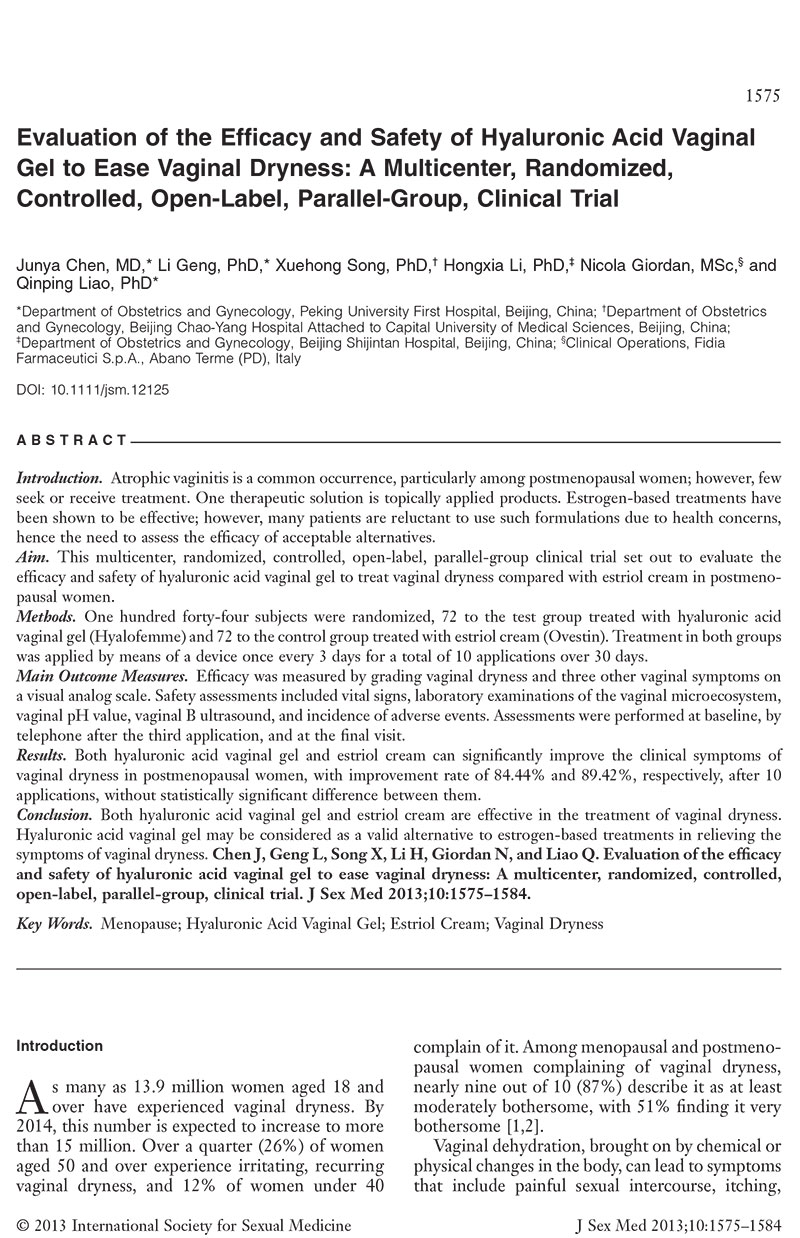Efficacy and safety of hyaluronic acid in treatment of leg ulcers

Efficacy and safety of hyaluronic acid in treatment of leg ulcers: a double-blind RCT
Article specifications
This double-blind, randomized, controlled trial was published in 2012 in journal of wound care (IF 2014: 1.205) by French and polish dermatologists. The aim of this study is investigating the efficacy and safety of hyaluronic acid in the local treatment of leg ulcers of venous or mixed etiology, compared with a neutral vehicle. A total of 101 patients (aged 18 years or over) were randomized and analyzed in the intention-to-treat (ITT) population (50 in the hyaluronic acid; 51 in the control group). It’s a 60-day controlled superiority trial. The primary endpoint was the percentage wound size reduction after 45 days of treatment. Secondary endpoints included pain intensity, rate of complete ulcer healing, and aspect of the wound (percentage of necrotic, fibrinous or granulation tissue) and of the peri-ulcer skin.
Results
Hyaluronic acid cream was significantly more effective than the neutral vehicle in the local treatment of leg ulcers of venous or mixed etiology, in terms of wound size reduction and reducing the burden of pain, with a good safety profile. Additionally, data obtained in this study suggest that hyaluronic acid treatment might have a positive impact on quality of life through a significant reduction in pain intensity.
Tags: France Poland wound care Clinical trial 2012
